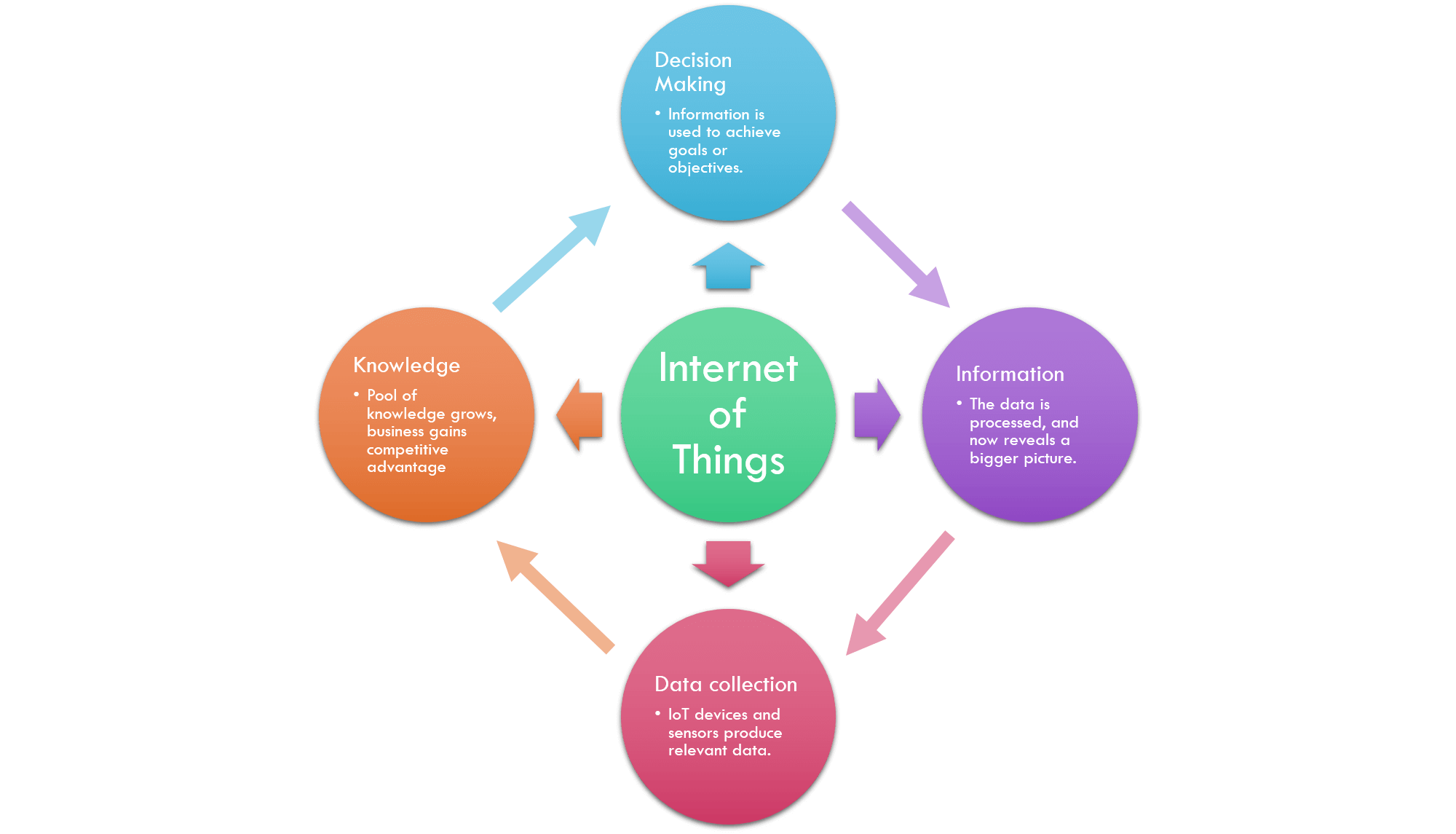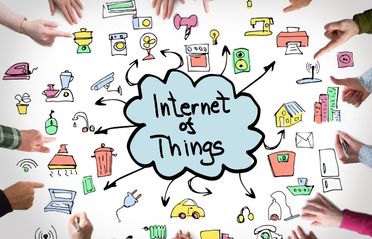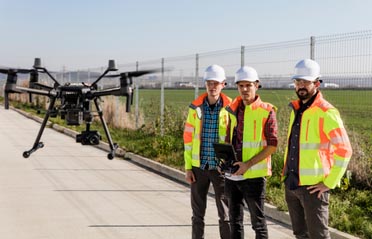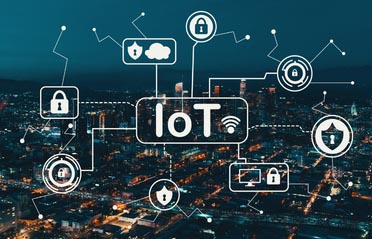The Internet of Things (IoT) in its broader definition, is the interconnection of many heterogeneous devices ñ ranging from desktop computers, embedded systems, small sensors, among others. This network collects and exchanges data to enhance the process of decision making. It is also used to remotely sense and control objects. This creates a new paradigm in which the physical world and computer based systems are working together.
Big Data, business intelligence, and data mining are somewhat recent terms that refer to the techniques employed by institutions and corporations to collect and process data that enriches the decision making phase. The Internet of Things is set to greatly increase the rate at which this data is produced, with millions and millions of sensors and devices which are monitoring the status of physical objects & the information collected depends on the object being monitored and can include temperatures, humidity, positioning (GPS), etc.
The implementation of IoT requires that an organization or business answers three simple questions:
- What information needs to be collected in order to increase the decision making capabilities?
- What devices will be used to collect the data?
- How will the data be processed?
This planning is necessary to create a viable working model that a business can use to gather the precious data.
Key Statistics
Business Insider released a new report, in which they analyzed how the IoT ecosystem enables entities (i.e. consumers, businesses, and governments) to monitor, and control their IoT devices in 16 environments, including manufacturing, smart homes , transportation and agriculture. The study projected that there will be 24 billion IoT devices, and that nearly $6 trillion will be spent on those solutions. While businesses will be the top adopter of IoT devices, the report suggests that the three main benefits of IoT solutions will be:
- Lowering operating costs
- Increasing productivity
- Expanding or developing new product offerings
A study by the world leading logistics service provider DHL in conjunction with the networks solutions provider Cisco predicts that the Internet of Things will help businesses save $1.2 trillion in productivity costs alone. How IoT would reduce these costs depends on the particular nature of the business, but some practical examples include: inventory management, keeping track of your expensive stock – with sensors in place, an item can be monitored in a myriad of aspects. If your business provides preventive or proactive repairs of products, the IoT will allow you to keep track of the customerís items, detecting problems and doing troubleshooting without sending a labor worker, sensors will also be able to tell you how is the product being used and handled.
With this information in hand, a business may unlock new product offerings and solutions, gain insight about how your customerís treat your products, and how your devices perform under several situations, monetize new services around a productís usage.
Use Cases
Fleet management
This year, six fleets of self-driving cars simultaneously completed a journey from several locations in Sweden, Germany, Denmark and Belgium, with Netherlands as the final destination. The trucks used a system comprising of multiple systems and technologies, using Wi-Fi, sensors and radio equipment. Right now, IoT solutions are being used by big companies in the transportation sector to keep tabs on vehicles, their location, and other useful information such as fuel levels, and general maintenance data. This unprecedented high amount of data is processed, and interpreted in real-time to assess the current state of key metrics ñ which varies according to the business and each individual case.
Many of the technologies backing up IoT have been in use for several years by different logistics providers. Handheld scanners improved the way in which items are delivered, eliminating the paperwork and reducing costs, sensors are also being used by companies to monitor the cargo integrity, and their location. The IoT paradigm can integrate all of this information together into a single pane of glass to allow managers to take better decisions, certainly, deploying IoT solutions will be a game changer.
Healthcare
The IoT is characterized for its ubiquity, and the practical applications of this technology are immense, in the healthcare sector. The IoT is prepared to serve a big network of devices that integrates, and connects healthcare institutions with their patients. Today, the market is populated by wearable devices that track a userís vitals like the heartbeat, blood pressure, and sugar levels. ABI Research has projected that by 2016, wearable medical devicesí sales will reach more than 100 million devices annually. People are using these products to monitor their performance in several sports, and physical activities which helps them keep track of their caloric expenditure, running routes, exercise schedules, etc.
IoT will allow customers to get medical advice or attention more quickly, using sensors or wearable devices. A health institution can monitor the status of chronically ill patients and it is even possible to remotely control medical hardware located in the patientís home. A person suffering of a heart attack can hardly call an ambulance, but with IoT,this help will be automatically requested.
Retail sector
For the retail industry, the IoT enables the improvement of customer experience, the supply chain and creates new revenue sources. With the growth of smartphones, customers use these devices ñ along with wearable technology – to search and pay online for desired products. Users tend to look at a productís information and reviews on social media. With the increase in wireless payment solutions ñ fueled by technologies like the NFC – users are now buying groceries and first necessity items. Smart shelves will sense the level of inventories, sending alerts to employees to re-stock the product aisles, and pushing forward, these alerts can also be used to automatically request and buy items to the shopís suppliers.
Wireless payment solutions are becoming increasingly popular; people are now able to pay for a coffee using their smartwatches or smartphones. Google has introduced their Android Pay solution; Apple has done the same.
User Interface
Smartphones and wearables may become the main interface between businesses and customers and this relationship will depend on how the user interacts with the different devices. What can be expected out of them in the near future? It seems like the early adopters tend to use wearables to perform simple tasks. In the smartwatch department, for example, the users benefit from the ability to glance over information and messages to send quick replies, and to quickly perform small tasks and this frees the user from picking up their phones.
Designers and experts have quickly come up with new ways and uses for wearables. For example, to pay for transportation: with a quick movement of the hand, a NFC enabled smartwatch can pay for a subway ticket. It has also been suggested that a smart-watch can be used as a smart-houseís control center: changing the air temperature, preparing coffee, etc.
Augmented Reality
The integration of sensors and machines, coupled with the introduction of Augmented Reality products, will deliver a new way to see and interpret information. With AR equipment, IoT devices will show up on our screens delivering their status information and enabling us to interact with them. In a use case, we could see an AR pair of glasses that connects to a smart home. With a new layer between the eyes and the real world, the user could see several feeds of information like security cameras, status reports on electrical bills, remotely controlling objects around your house, etc. The IoT will allow all these devices to be interconnected and controlled from the same place.
Risks and Challenges
There are a couple of concerns about the IoT development. Businesses will have to deal with the complexities associated with the use of many interconnected devices, along with the security risks associated with them. Itís not a secret that a lot of the data handled by companies and institutions require protection and encryption, and as such, any harm done to the vast network of IoT devices can cause a variable amount of loss for the organization.
Interconnected devices will need a secure way to communicate, negotiate, transact, and collaborate. As a solution of this problem, a new technology has come up-The Ethereumís Blockchain ñ a distributed ledger system that has high level encryption. This technology is open, secure, and can create and enforce contracts. This opens up new possibilities in the finance world along with other fields.
In layman terms, a Blockchain is distributed database in which every node has the exact same copy of the data and this creates a consensus. If every node has the same information, then itís difficult to lose the data. This chain of transactions is also secure, because an attacker requires an enormous amount of computing power to revert a single transaction, making it prohibitively expensive to attack such a network.
Ethereum is a project that took the original Blockchain technology, and improved it further to enable the Blockchain to not only validate transactions, but to also act as a global computer. A developer can create Distributed Applications ñ or Dapps, that takes advantages of the inherent security and transparency of the Blockchain, to enforce the execution of programs. In simple terms, the source code is law, no alterations of the program are possible. Its distributed nature makes downtimes impossible, and censorship is impractical. With this technology, IoT secures its future, allowing transactions between devices to be safe and secure of malicious hands.

Product Engineering Services Customized software development services for diverse domains
Quality Assurance End-to-end quality assurance and testing services
Managed Services Achieve scalability, operational efficiency and business continuity
Technology Consulting & Architecture Leverage the extensive knowledge of our Domain Experts




